The Tesla Roadster pure electric vehicle is more gadget than car, so when I got the chance to drive one, I figured I better write about it. I have a client who pre-ordered a Tesla Roadster years ago, and was the first person in San Diego to take delivery of it. I drove it the next day.
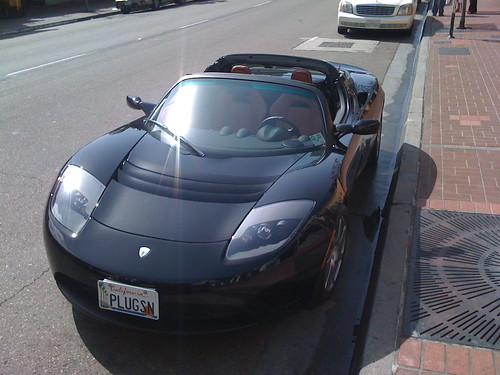
The Tesla is a beautiful car—it’s the same size and shape as the now-familiar Lotus Elise and built to look like a 70’s era pure roadster. I unfortunately am far too tall to drive roadsters. At 6’5, there are many that I can’t even close the door on (Mazda Miata) and even in the largest (Mercedes-Benz SL500) I’m too squeezed to be comfortable. My daily driver is a four-seat ragtop for that reason; it’s the closest thing to a roadster I’m able to drive comfortably.
Climbing into the Tesla is a chore for that reason, although I am able to close the door and drive the vehicle. If you’re 6’ or taller, drive this car before you put your name on the list. The windshield crossbar was just above my eye height, and I had to look over it to see stoplights. I would not have been able to drive the car with the top on.

The fit and finish of the Tesla’s interior does not compare to any modern car in terms of quality—even the least expensive cars on the market in the U.S. are better built. The seats are fine, but the center console wobbled when I tried to leverage myself on it so much that I thought I’d break it, and the door rattled when I shut it. To say that I was not impressed with it is an understatement—the interior is clearly an afterthought, and seems transported from a 1971 Porsche 911 intact. Their car starts with a fairly typical integrated smart-key, but that’s the only sign of technology in the cockpit.

Starting is as eerie as any hybrid—you put the key in, turn the car on, and the dash lights come up. Nothing else happens. The transmission has three positions: R-N-D and that’s all it needs. Park is the same as neutral; there is no actual freewheeling position because the engine is always engaged on the power train.
Pulling out of a parallel parking spot is also reminiscent of a 1971 Porsche 911 due to the lack of power steering. I had a bit of a tough time of it, made more awkward by the fact that my knee took up the space between the door and the steering wheel so I couldn’t torque the wheel around properly. Moving the wheels at a stop is a chore.

That same lack of power steering is quickly forgiven at speeds above 3mph however, as it translates into a crisp and precise rack-and-pinion steering that you find only on true roadsters these days. The car handles exceptionally well because of it and it clearly has excellent weight distribution.
The lack of fit and finish is forgiven the first time you press the accelerator. The car puts you back in your seat so fast and accelerates so quickly that it makes the normal engine wind-up time in a gas-engine vehicle seem like turbo lag—There is absolutely no delay between depressing the accelerator and actually accelerating. It’s like a motorcycle above 6000rpm: Power is on tap instantly. There’s no shifting because the car has a one-speed transmission, and no skill required. Just drop the hammer and the car goes. It’s like driving the world’s fastest golf cart.
Driving is also eerie. You hear a distant-sounding electronic spool-up sound like a fan or perhaps wheel bearings, and road noise. That’s it. There is no engine noise or other car noise whatsoever.
The car does 0-60 in less than four seconds, making it the fastest car I’ve ever driven and comparable to my motorcycle in terms of acceleration. On the freeway it’s the most fun you’ll have in anything with four wheels. Breaking is just as crisp and precise, and acceleration remains on-tap. It has made me a believer in the performance potential of electric motors. They will kill internal combustion direct-drive cars as soon as inexpensive battery or fuel cell technology becomes available.

Charging takes about four and a half hours at 240VAC, and in San Diego a special meter had to be installed at my client’s home to take advantage of a night rate discount that SDG&E provides for charging electric cars. A full charge costs about $10 here, but your price will vary dramatically depending upon what you pay for electricity. The car can be charged at 120VAC but expect that to take about eight hours. A full charge nets about 250 miles according to my client, but they had not yet depleted the battery.
Overall, it’s a fun toy if you’ve got $100,000 to burn and perhaps a good daily commuter, but certainly not the only car you could own unless you’re single, short, and never go more than 120 miles from your charging station.
We’ve written about the Tesla Roadster before:
You can visit Telsa’s website here:


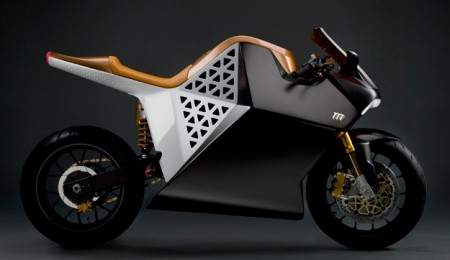
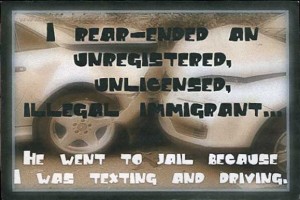
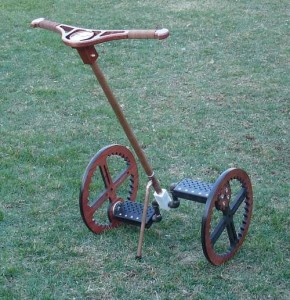





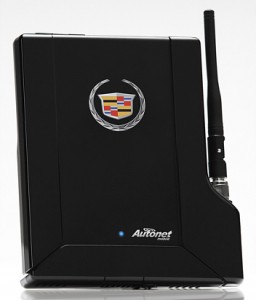 The news that Cadillac is including a feature to allow you to have Wi Fi Internet access in your car at all times for only 30 bucks a month makes me happy and angry at the same time.
The news that Cadillac is including a feature to allow you to have Wi Fi Internet access in your car at all times for only 30 bucks a month makes me happy and angry at the same time. 
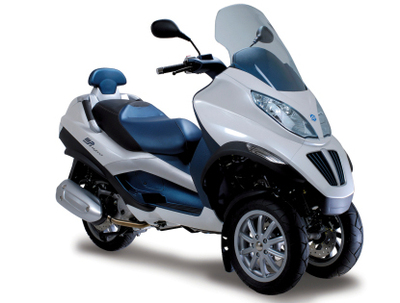 Wired Magazine has a great article about the MP3 Hybrid Scooter from Piaggio.
Wired Magazine has a great article about the MP3 Hybrid Scooter from Piaggio. 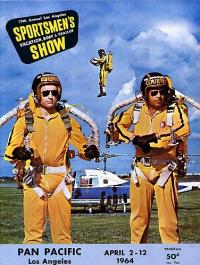 The excellent Ed Grabianowski at io9 has the five reasons you don’t have a personal jet pack yet:
The excellent Ed Grabianowski at io9 has the five reasons you don’t have a personal jet pack yet: 